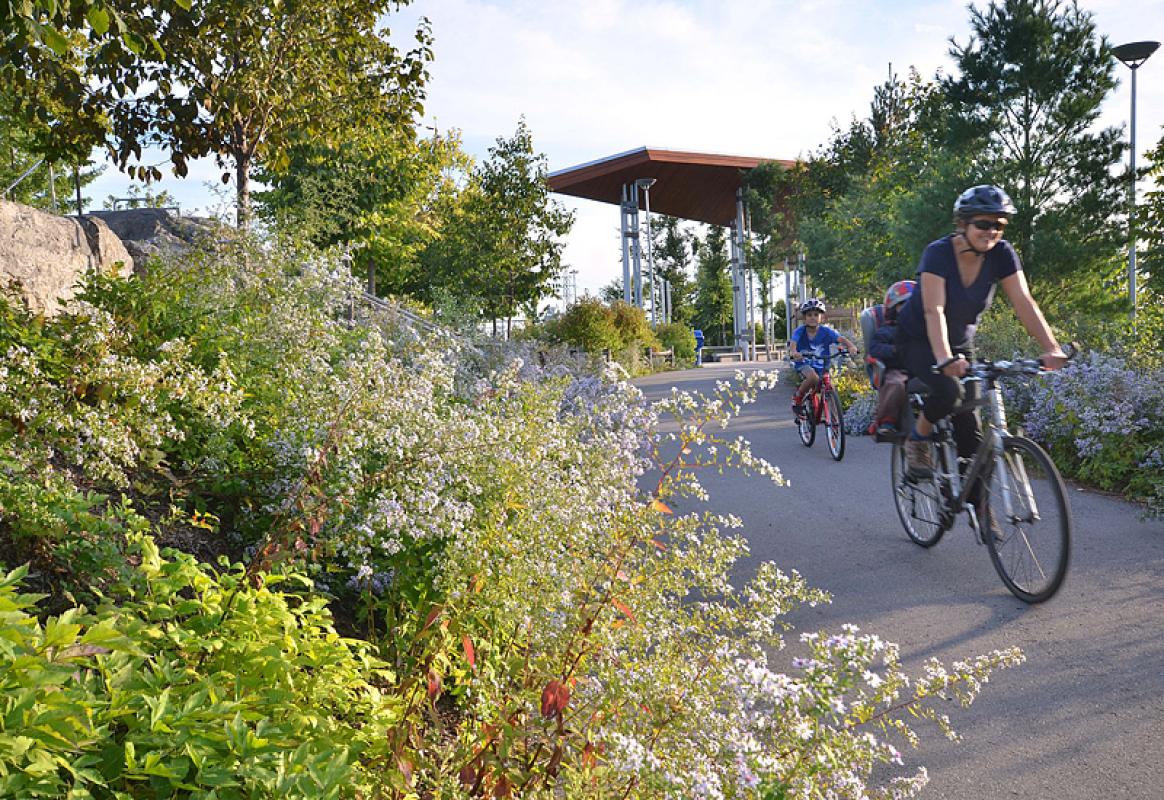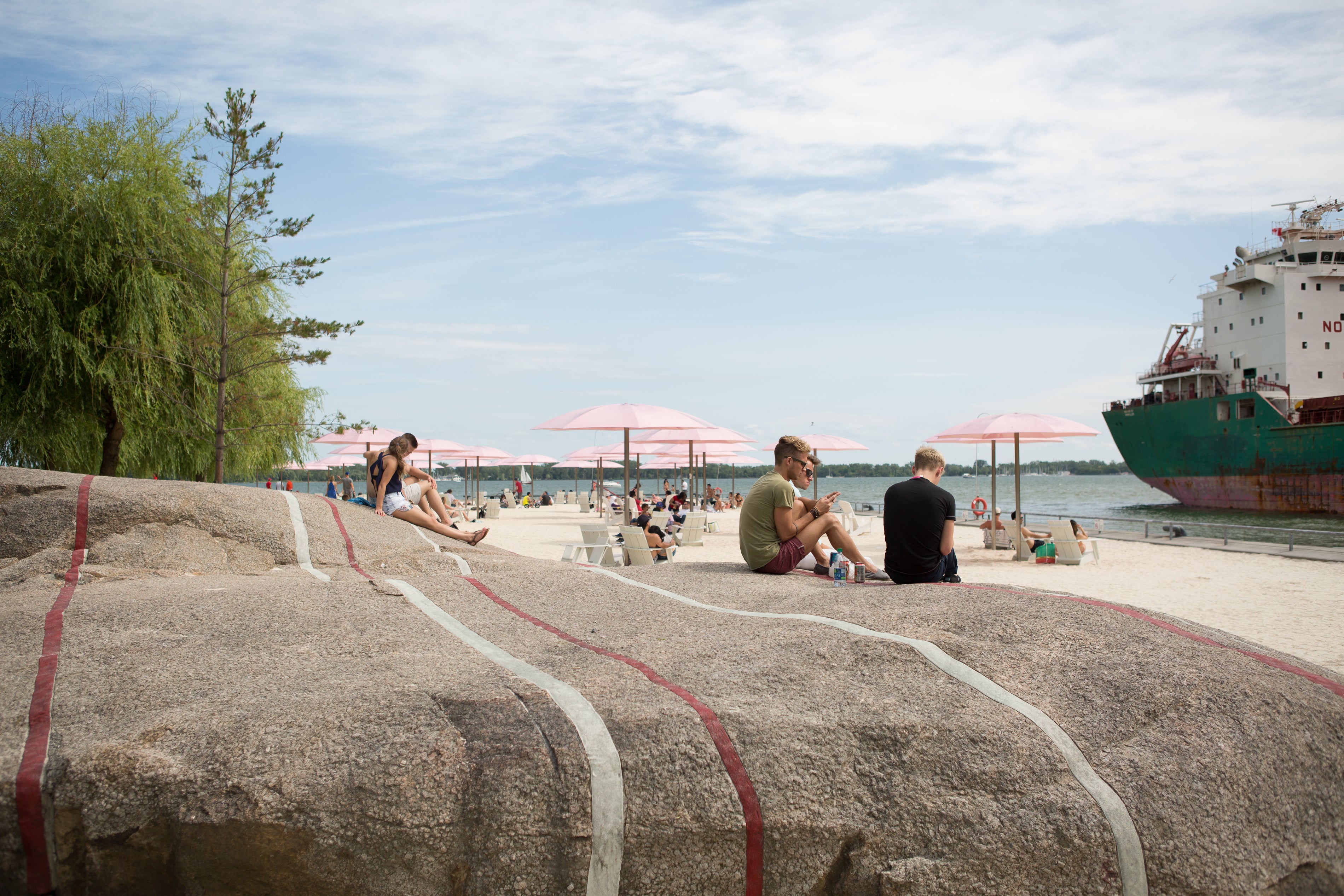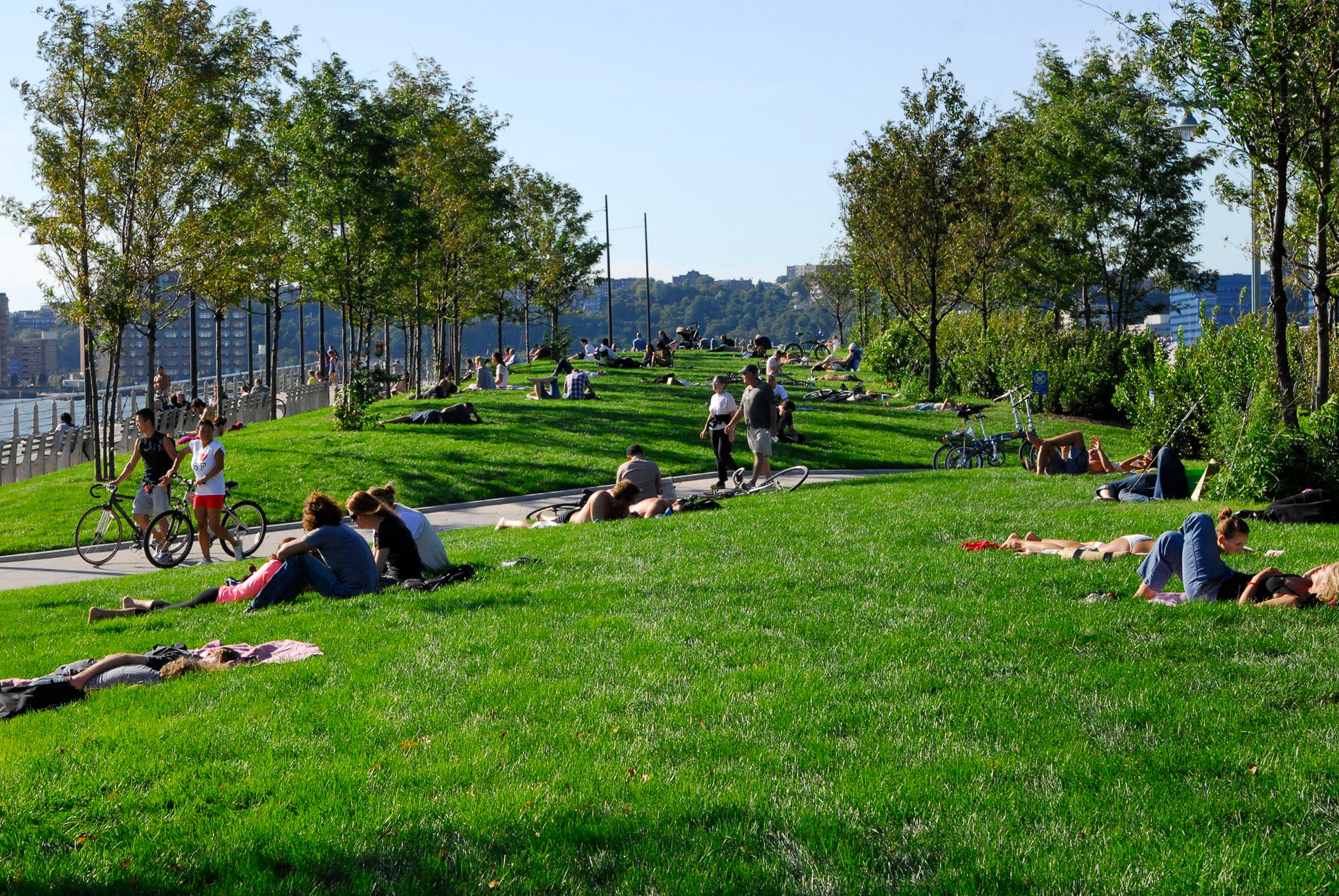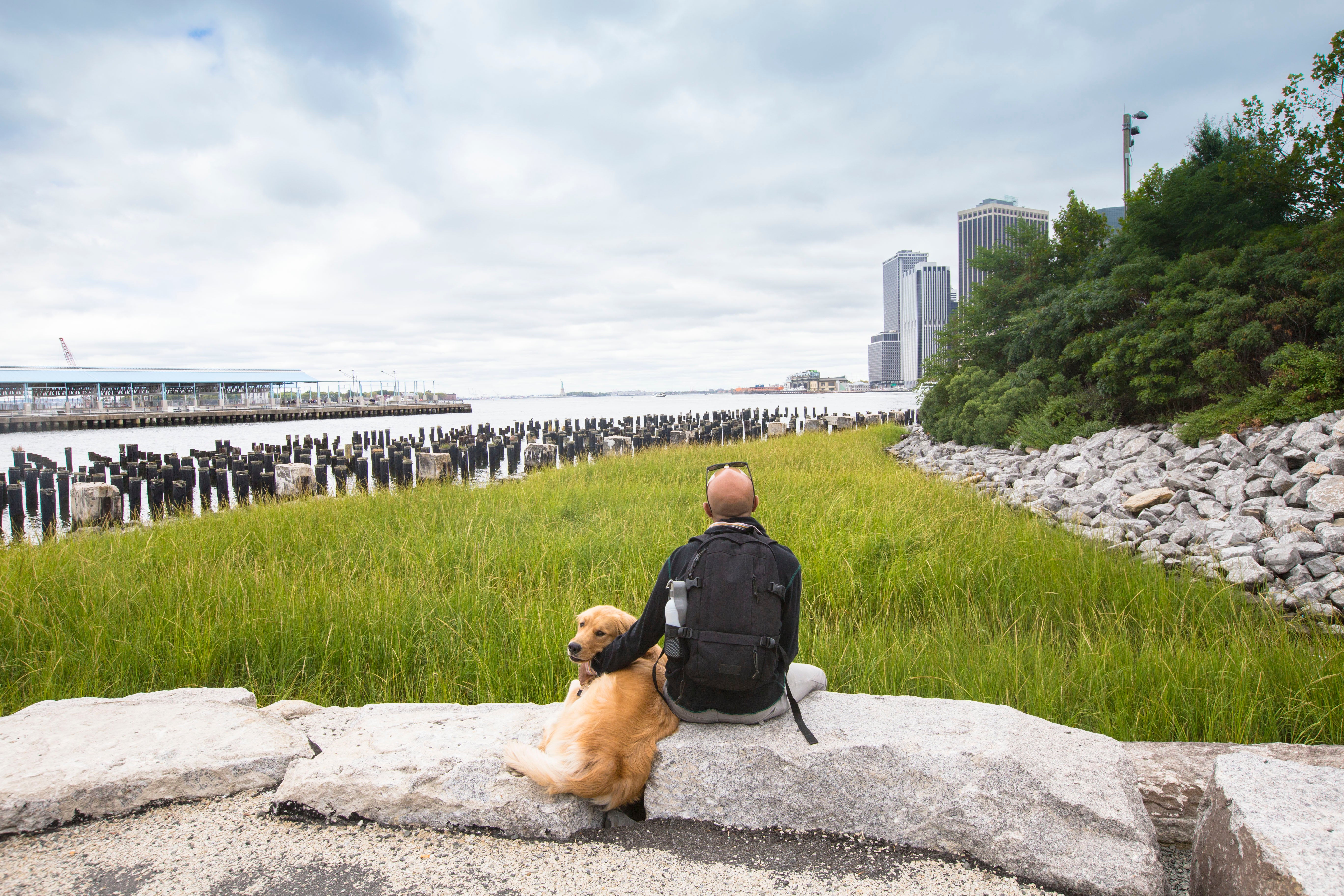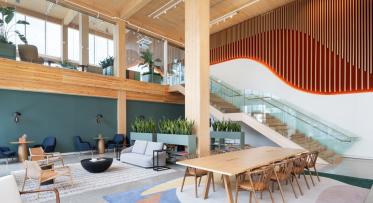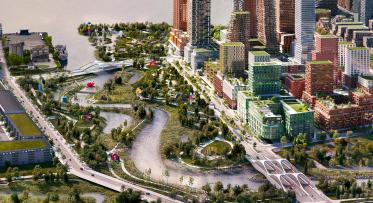What Makes A Great Park?
While all parks are distinct in their own ways, landscape architect Michael Van Valkenburgh believes great parks share common characteristics. His vision for a truly great urban park is one where all these elements blend together to create an enjoyable space for everyone.
POSTED: DECEMBER 5, 2017
BY: MICHAEL VAN VALKENBURGH, MVVA INC. (GUEST CONTRIBUTOR)
While all parks are distinct in their own ways, I believe great parks share common characteristics such as access to the surrounding community, a variety of activities, comfort and quality design. In a truly great urban park, all of these elements blend together to create an enjoyable space for everyone.
Connections
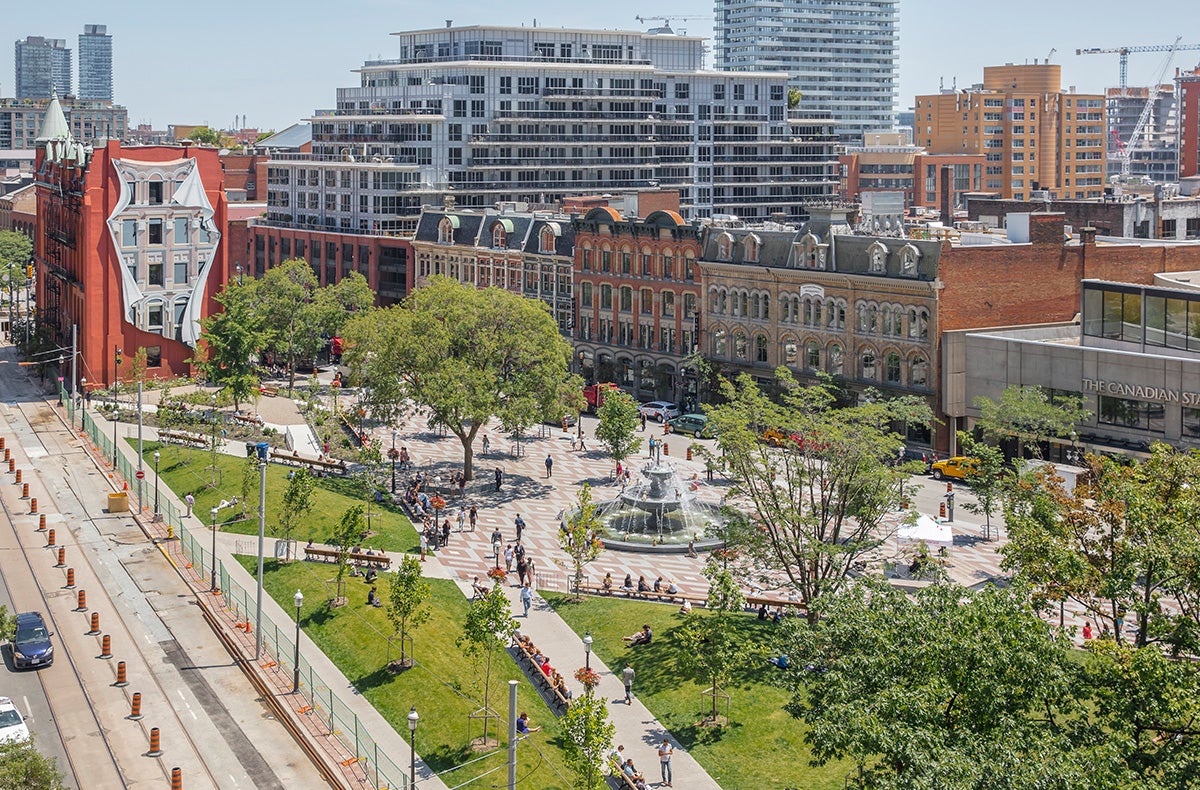
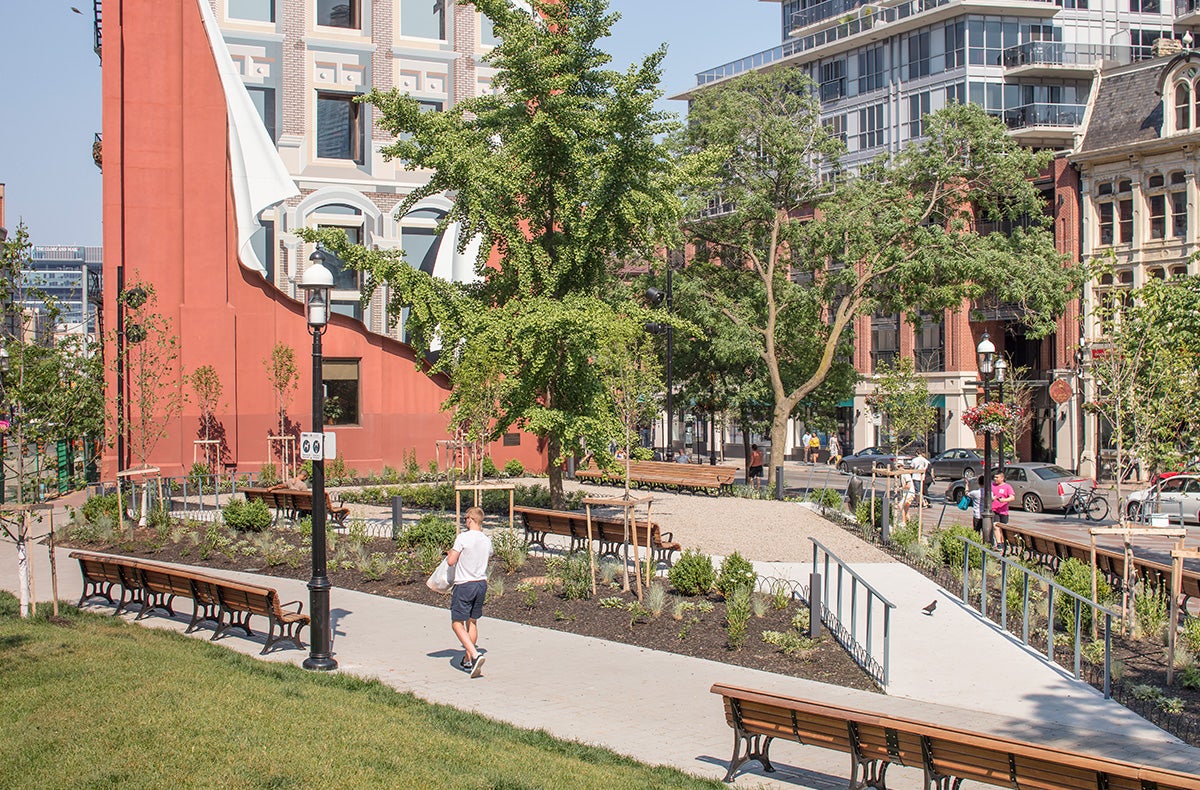
Berczy Park. Photo credit: Industryous photography
Just as the three most important things in real estate are: "location, location, location," the three most important factors in a park’s success are: "connections, connections, connections." A great park will have strong physical connections to its surroundings, be tied into all types of transportation options, and allow pedestrians to effortlessly overcome barriers such as urban roadways.
A great park cannot happen without people. This is a give-and-take relationship: the community strengthens the park and the park strengthens the community. A great park will provide things that the neighborhood needs and desires for daily life, such as playgrounds and off-leash areas for dogs, and also unique features and experiences that draw in visitors from other communities.
Variety
Top: Splash pad at Sugar Beach. Bottom: Candy-striped rocks are the perfect place to sit and relax at Sugar Beach.
Parks help make a city livable for everyone. A great urban park should offer a variety of experiences for many different people across the course of the day and in each season of the year. A great park provides choices and will have something for people who want to relax, play, exercise or simply connect with their community. Flexibility is a key attribute in providing variety – sometimes a single space can be capable of serving multiple types of use, in other instances flexibility means a structure that allows for different uses to evolve in the future.
Comfort
Hudson River Park in New York City.
The most basic freedom afforded by great urban parks is the ability not just to occupy places of beauty and meaning, but to also feel comfortable using them. Paying attention to environmental features, such as shade in the summer or rain and wind protection, makes a park more inviting and usable in every season. Similarly, places to sit, restrooms, water fountains, park buildings and food concessions can make a park a place where people want to spend their time. Lighting, sight lines, and circulation design all help people feel safe when visiting the park, especially during walks at night. In a great urban park, comfort is part of the structural DNA, as well as an active program of things to do that is revised and adjusted over time, in response to changing patterns of use.
Materials
Brooklyn Bridge Park looking toward the Salt Marsh and Pier One in New York City.
All landscapes are made of roughly the same things — plants, earth, stone and water. These materials interact with each other and natural elements to build a sense of materiality within a landscape. Materiality is more than how a place looks or feels, it is also essential to how a park functions, where “function” can incorporate everything from managing stormwater to engaging the imagination. Using expensive materials does not, in and of itself, make for a great park. Whether or not we realize it consciously, most of us perceive when a material choice does something for the whole, and when it is superfluous. Take plants, for instance – there is almost nothing more powerful than when plants are used as space-making elements in their own right.
Coherence
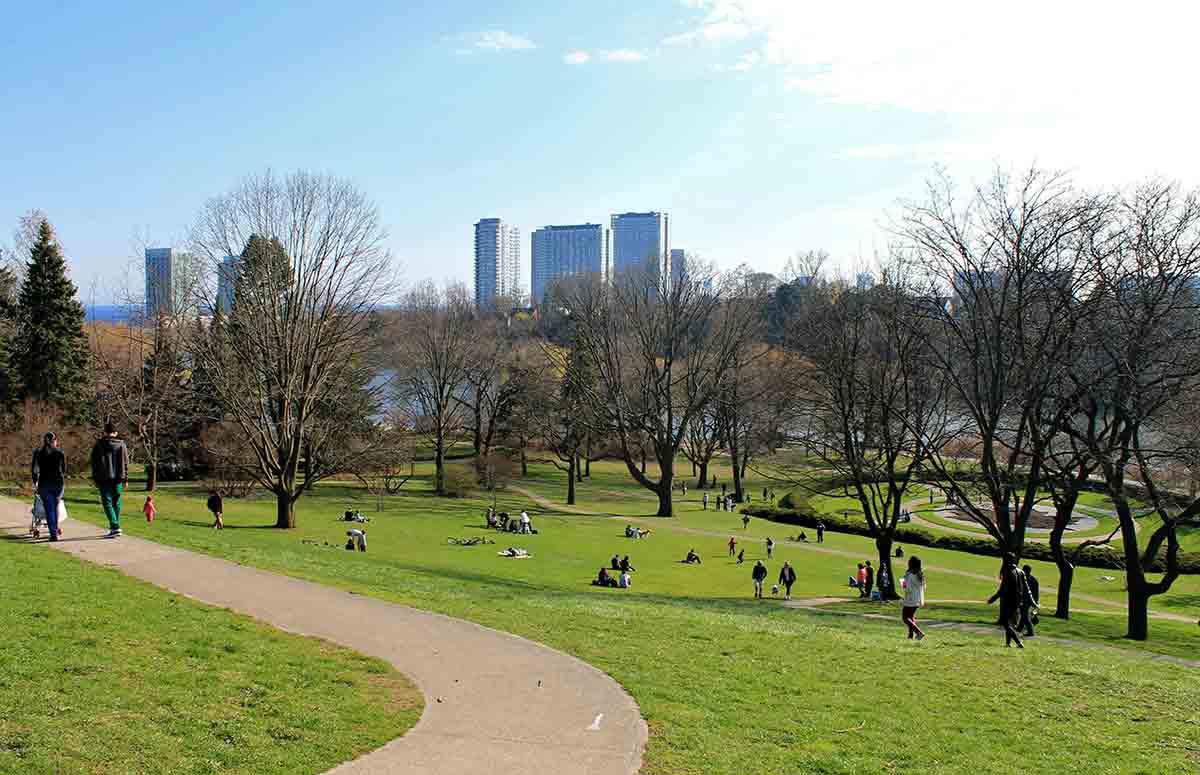 High Park in Toronto.
High Park in Toronto.
A park cannot be a welcoming place if it feels like it was patched together, rather than thought of as a whole. Planting, topography and circulation, all working together, are important tools in creating a sense of effortlessness in navigating a big complex park. You should be able to relax and lose yourself a bit in the experience without having the anxiety of actually feeling lost. Sometimes landscapes rely on accessories and branding to achieve coherence – standardized benches, elaborate light poles, signature paving and so on. These are all important elements, but they should always work in support of landscape space, form, and coherence which are the most important contributors to overall experience and enjoyment.
Range
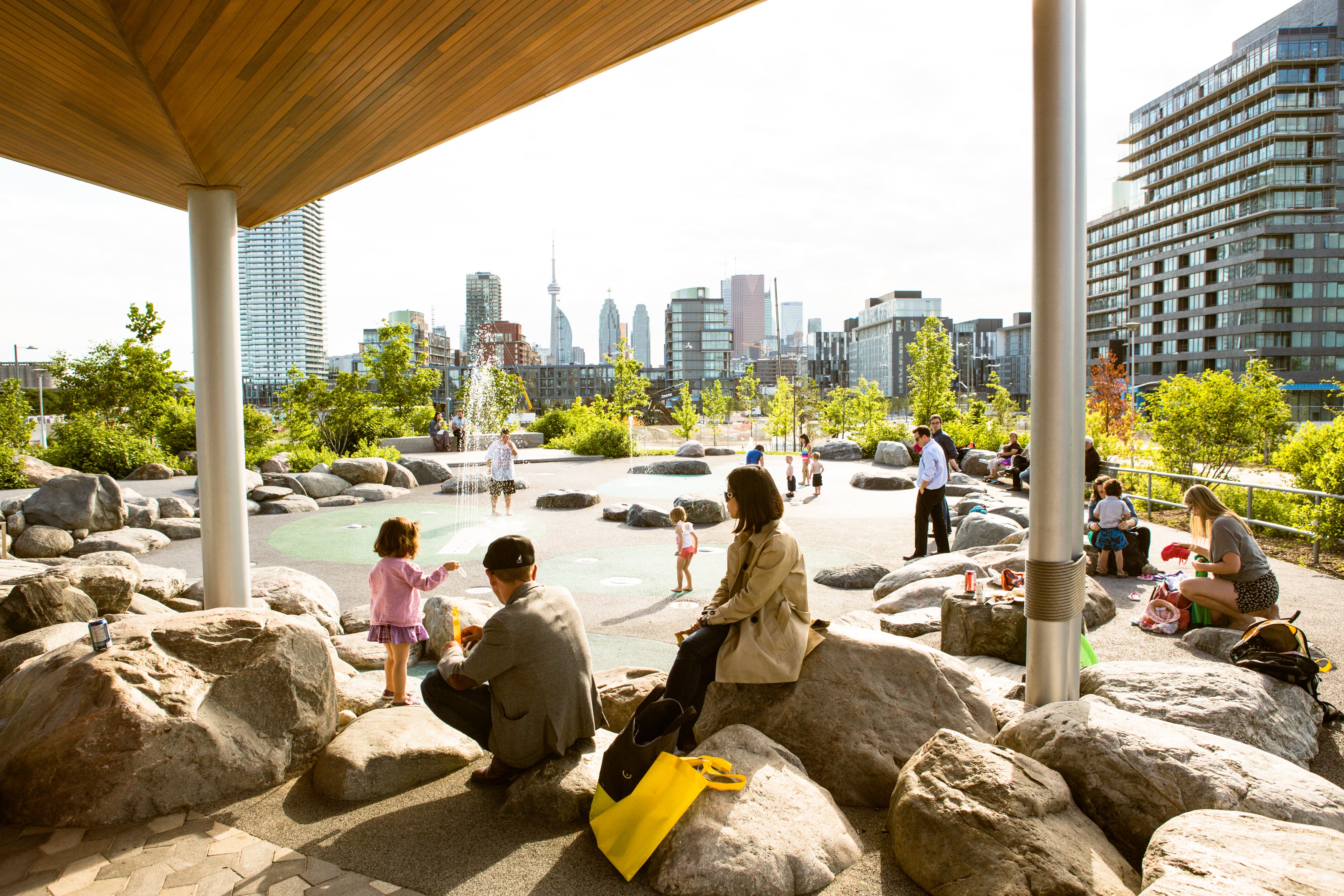
Top: The marsh at Corktown Common. Bottom: A view of downtown Toronto from the pavilion at Corktown Common.
A great urban park offers many types of picturesque views and experiences. Imagine for example – bright fall leaves, the first green shoots of spring, a group of strangers brought together for amusement or the laughter of children playing tag. Most of these things are only partially within the control of a landscape architect, but it is our job to find as many ways as possible to expand a site’s capacity to deliver this type of magic. In addition to signature moments, it is the joy of discovery and a sense of connection that will be the true selling point of a great park, making you want to visit again and again. Frederick Law Olmsted – the father of American landscape architecture – called this “range.” It’s the best word I have found to describe this complex interaction of spatial scale, texture, openness, enclosure, fragrance, weather, humanity and solitude and the way that seemingly intangible experiences can have a profoundly uplifting effect on our collective and individual psyches.
What do you think?
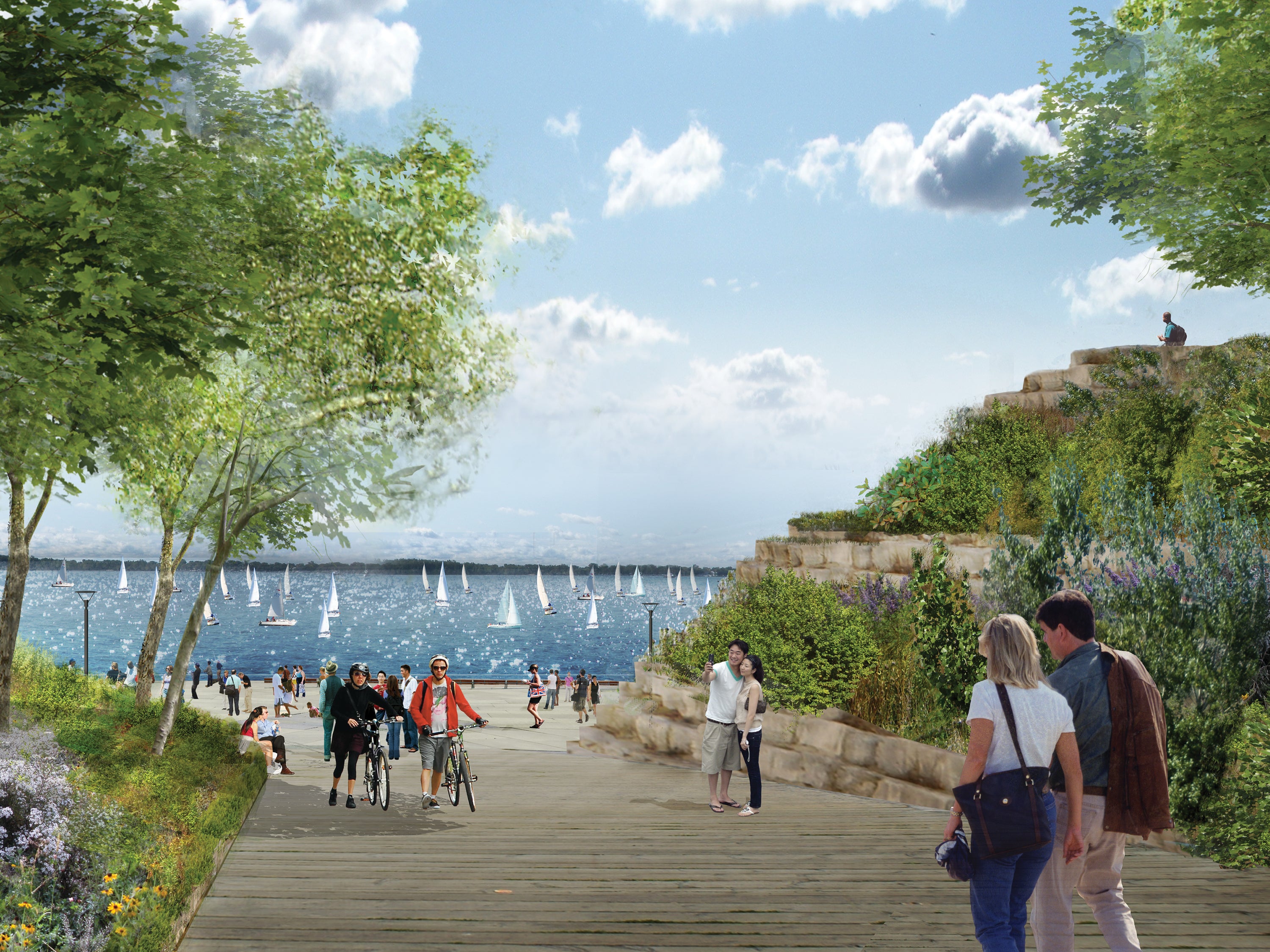
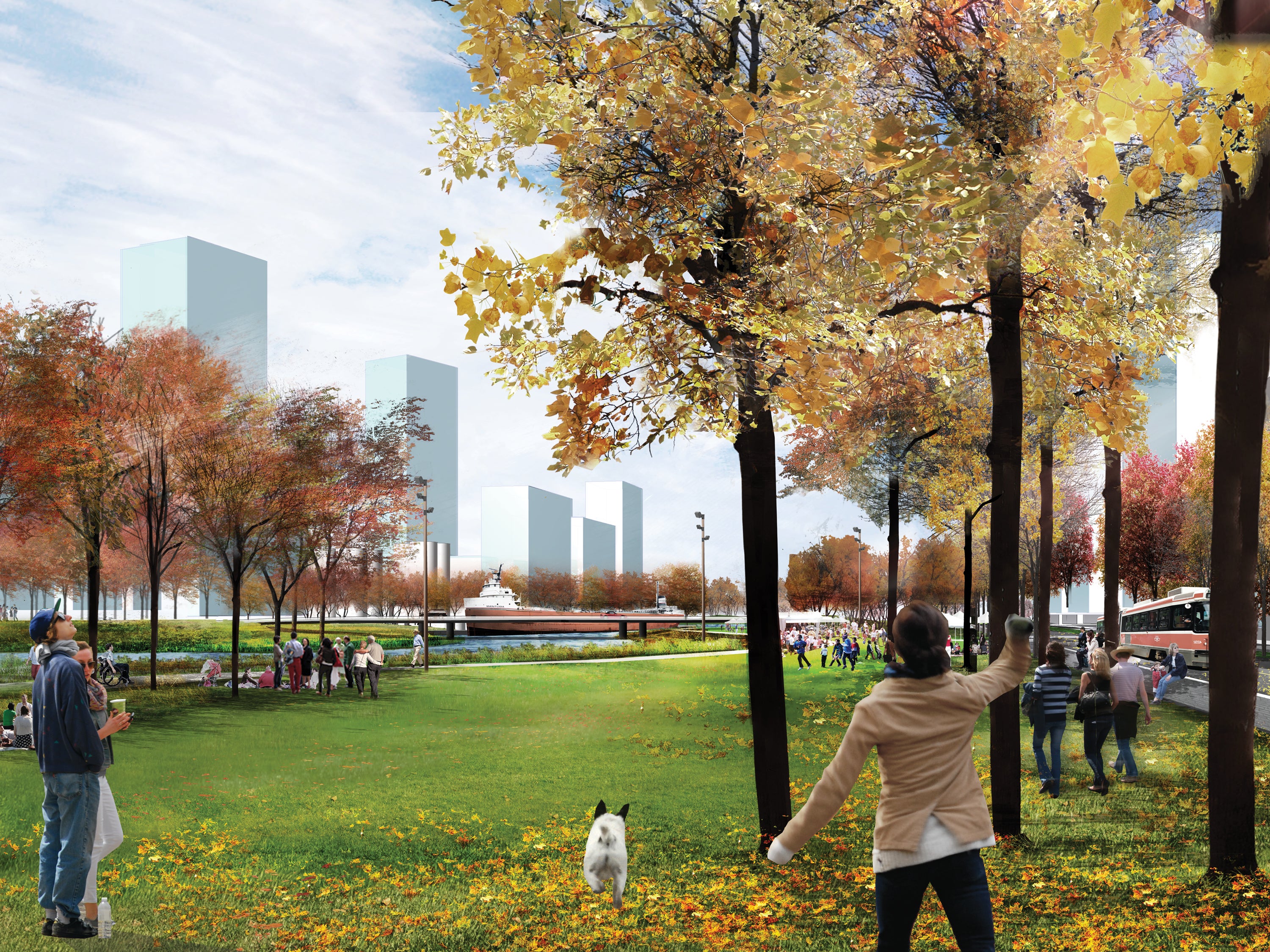
Renderings show the possibilities for a transformation of the Port Lands. Take a quick survey to help us build on this vision!
Since the Lower Don Lands design competition in 2007, Michael Van Valkenburgh and his team at MVVA have looked at ways to bring urban living and accessible green spaces to the Port Lands. They've asked themselves: What makes a great urban park? Now we want to ask you the same question. Take this quick survey to let us know what types of park experiences are most important to you.
Click here to take the survey.
Save the date: public meeting February 22
Through the Don Mouth Naturalization and Port Lands Flood Protection Environmental Assessment, Waterfront Toronto has worked with MVVA, Toronto and Region Conservation and the City of Toronto to develop a high-level design for the green spaces that will be created as part of the project. Some spaces are designated for active programming and some are earmarked for more wild, natural spaces.
We’ve gathered lots of great feedback on the Don Mouth Naturalization and Port Lands Flood Protection project over more than a decade of planning. What we've heard is a desire for design that maximizes enjoyment of a naturalized river mouth park and views of the harbour, preserve wildlife and river functions, public access to the water’s edge for recreational boating activities and connections throughout the new parks and neighbourhoods.
We’re now developing the more detailed design for the new parks and public realm coming to the Port Lands. And we want to hear from you! Join us on February 22, 2018 from 6-9pm for a community consultation. We'll collect public feedback on the design of Promontory Park and the River Valley. Join the Facebook event to get details and updates about this meeting.
For more information about the planning and future development of the Port Lands and the Don Mouth Naturalization project, visit PortLandsTO.ca

